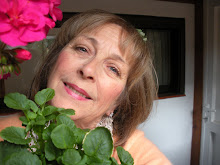Since the beginning of life , mankind has had to experiment with plants to find out which were edible and which were fatal. Somewhere along the way, a selection were set aside for magic and medicine: it is from these that many folk remedies have evolved.
By the time most of the ancient civilisations were thriving, therapeutic use of essential oils was part of everyday life. The Egyptians in 4500 BC used Myrrh and Cedarwood oils for embalming and 6500 years later, perfectly preserved mummies are proof of their skills. Modern research shows that Cedarwood contains a natural fixative and Myrrh has strong anti-bacterial and antiseptic properties, which explains why most mummies look so good considering their age.
The Egyptians were the first to distil plants in order to extract their essential oils. they used them medicinally, in religious ceremonies, as beautifying skin and face potions and perfumes, as well as for embalming. Oils were so highly prized, they were offered to the gods. The oils therepeutic uses and known properties were recorded on papyrus scrolls along with the secret recipes and how to use them. Their knowledge was so accurate it formed the basis for modern aromatherapy.
The Romans used essential oils for giving pleasure as much as for curing pain. They took leisurely, perfumed baths and massages every day. Emperor Nero's love of orgies, feasts and fragrances is legendary.
His favourite oil was rose as it cured headaches, lifted the spirit and eased digestion. Another Roman favourite was Chamomile which was used to treat skin problems and help in wound healing: it is now known to contain Azulene, a natural anti-inflammatory agent, which is why it has such a rejuvenating effect on skin.
In Greece, India, China and Arabia the use of aromatics thrived, but it wasn't until the 12th century that perfumery and herbalism spread throughout Europe.
 At the time of the Great Plague in 1665 it was so well established that Londoners burnt bundles of Lavender, Cypress and Cedar in the streets and carried personal posies as their only defence against infection. Undoubtably it saved thousands of lives, since all these plants contain powerful antiseptic agents.
At the time of the Great Plague in 1665 it was so well established that Londoners burnt bundles of Lavender, Cypress and Cedar in the streets and carried personal posies as their only defence against infection. Undoubtably it saved thousands of lives, since all these plants contain powerful antiseptic agents.Plants were used for making medicines and remedies until around 1900. Herbalists and apothecaries dispensed infusions, powders, ointments for everything from hair loss to impotence. Then modern medicine soon took over, with pharmaceutical scientists creating magic pills which seemed to make natural remedies seem primitive or old-fashioned. By the 1960's the world focused on the advances made in surgery, hospitals and general medicine while research into herbal cures began to take second place.




No comments:
Post a Comment